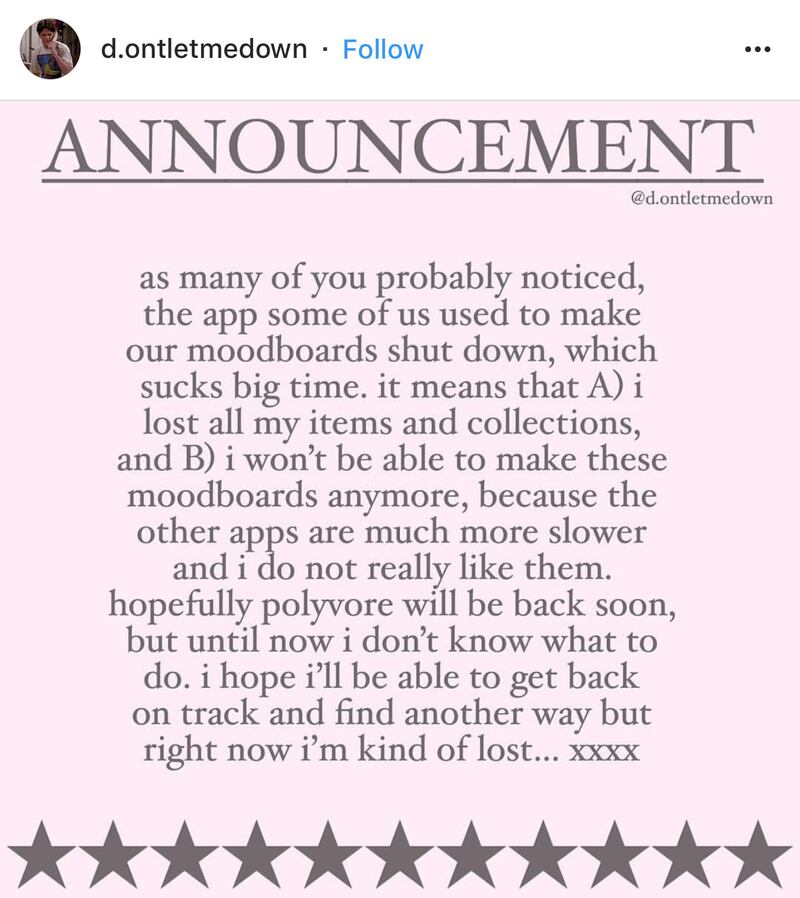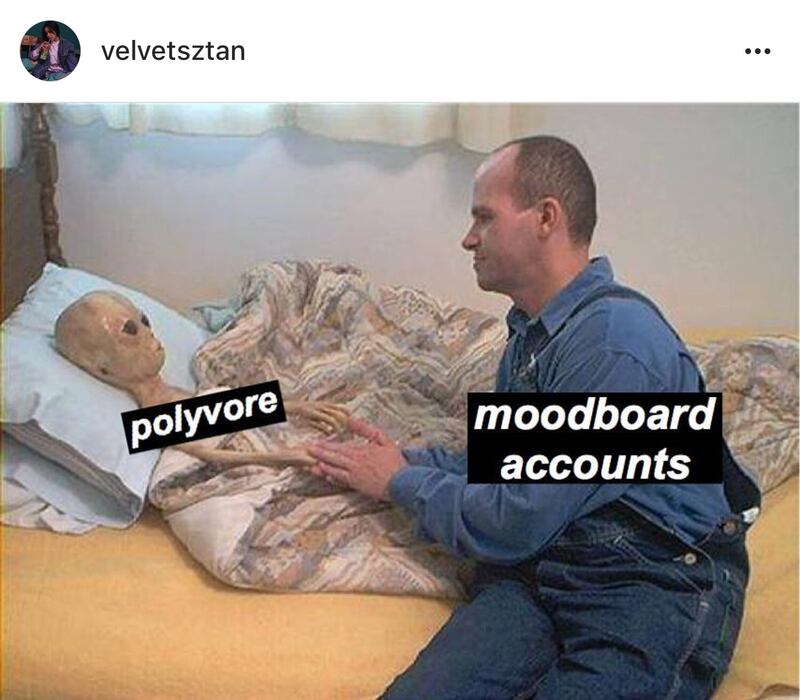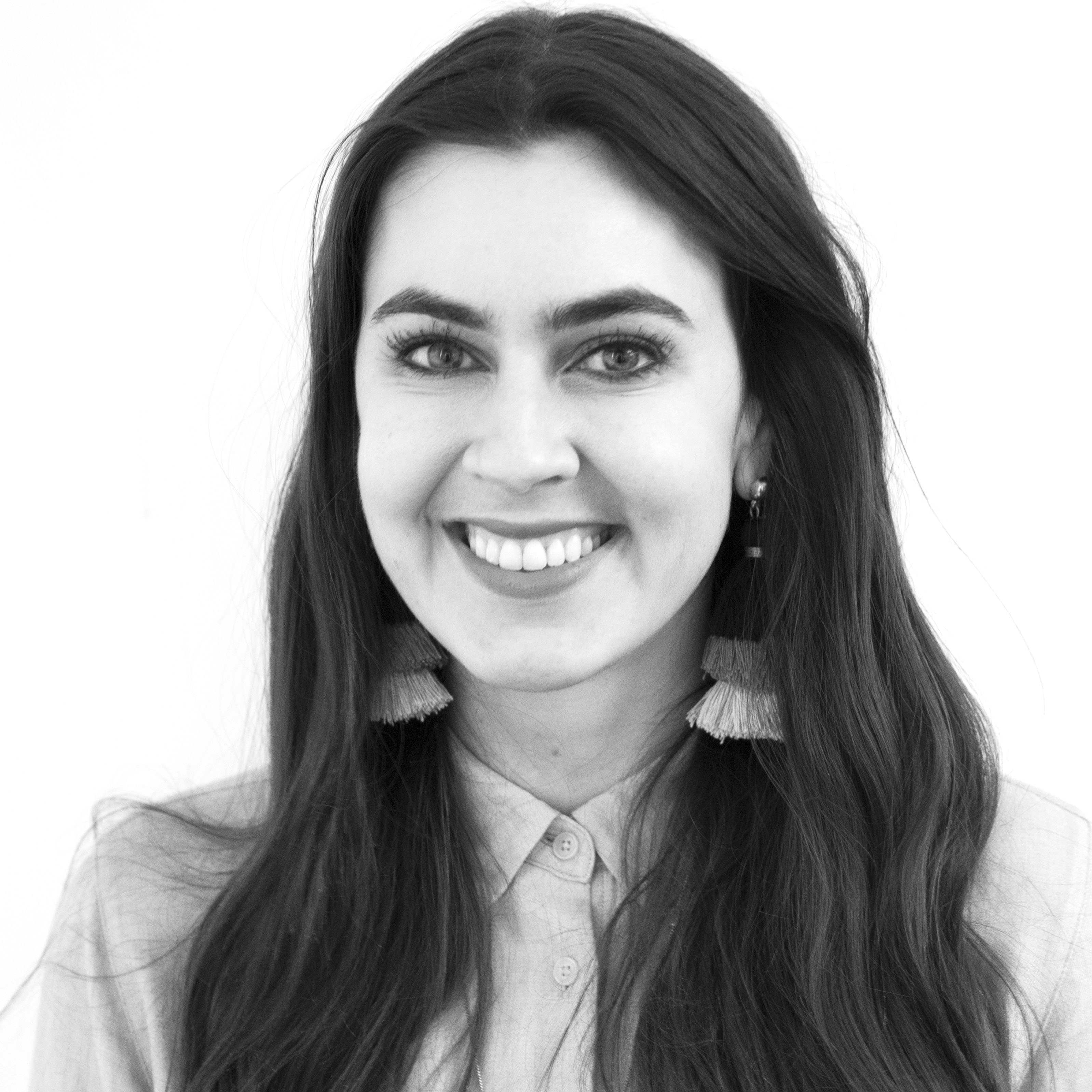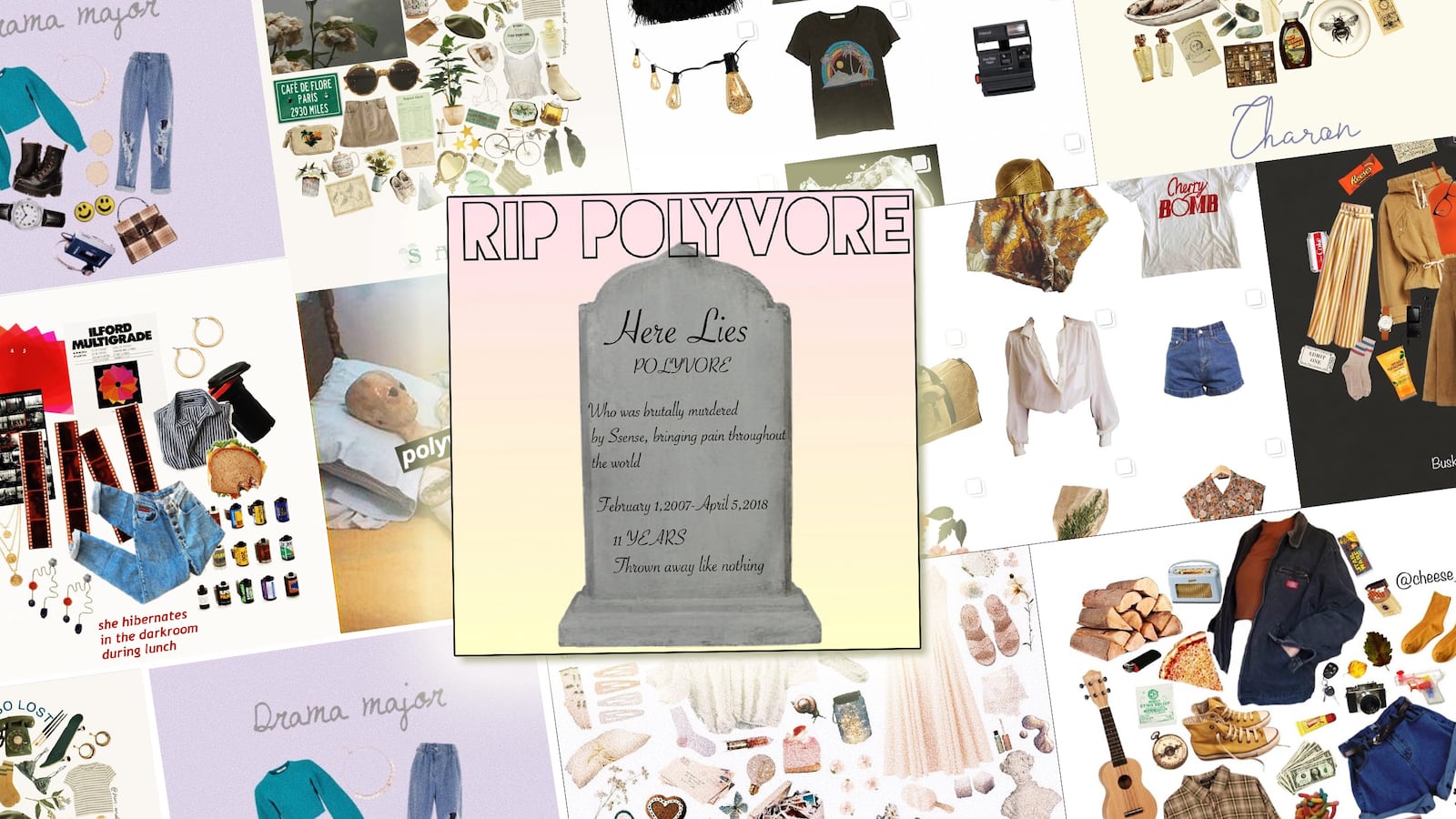When online shopping platform Polyvore suddenly shut down on Thursday afternoon, after being acquired by Montreal-based online fashion retailer Ssense, its users were left shocked and reeling.
But no community was more outraged by the company's shuttering than Instagram moodboarders.
“Polyvore shutting down is a major deal in the moodboard community,” said Emmett, a 15-year-old moodboarder in Alabama. "This makes our ‘jobs’ harder. Without Polyvore, we have to scour tons of sites to find the objects we’re looking for. This means that posts take longer to make, and from personal experience the less you post, the more followers you lose. This whole thing kinda sucks.”
Rose, a 15-year-old moodboarder in California agreed. “Everyone that relied on Polyvore to make their moodboards are now panicking to find another way to create them. Finding pngs are now much harder than before, doubling the time for creators like myself that make their moodboards as detailed as possible. In all we lost a creative outlet that most desperately need.”

The Instagram moodboard community has been growing steadily over the past year, reaching a fever pitch over the past six months. More than one million photos have been posted on the platform with the #moodboard hashtag, and several hundred-thousand more have been published under smaller subtags.
Moodboards are artfully designed digital collages. The moodboards on Instagram aim to mimic the physical moodboards that designers have utilized for decades. A 1970s-inspired moodboard, for instance, could include cut outs of things like bell bottoms, a disco ball, and other retro clothing.
Each moodboard account features a specific theme or color scheme, with users posting sometimes as frequently as once or twice per day. The community is comprised almost entirely of 12-to-18-year-old young women (though there are several prominent teen male mood borders), who use mood boards as a creative outlet.

Moodboards provide a digital escape, essentially allowing users to create small fantasy worlds, and producing them helps stave off the type of phone-induced boredom that can frequently strike during a user’s tenth straight hour scrolling through Instagram.
In order to produce a moodboard, a user must collect and artfully arrange sets of digital items. Polyvore became indispensable to the community because it allowed users to easily save and collect images of pre-cut out clothing and home items and arrange them in a custom manner with a background and lettering of the user's choosing.

As moodboarders slowly learned about Polyvore's demise Thursday afternoon, word spread through the community via group chat and Instagram posts.
Moodboarders desperately posted to their Instagram stories, begging followers to help petition the company to "come back online." Some users started an online petition, spammed Ssense— Polyvore's new parent company—with digital messages, and posted memes expressing their shock and sadness to their own accounts.
“Someone went live and was freaking out asking followers what to change their account to. Some moodboard accounts were deactivating, some were making memes about it,” said Nora, a 15-year-old moodboarder based in Saudi Arabia.
A sizeable group of moodboard accounts attempted to auction off their accounts with several thousand followers to other Instagram users since they declared this to be the end of the moodboard community.
Nora estimated that roughly 40% of the moodboard community will have no choice but to deactivate due to the loss of Polyvore.
“I’ve seen everything from anger to just sadness since the news first came out,” said Erin, a 14-year-old moodboarder from Washington state. “I feel like it feels like it’s the end of an era. Not to be overly dramatic, but lots of people are really angry. Everyone is still reeling from it.”
Lisa, a 16-year-old moodboarder from southern France, said that the best thing about Polyvore was how it made the creation of moodboards a quick and frictionless process—thereby making it easier for users to express themselves.

“It didn’t take too much time arranging the items around once you found them, and then in a matter of minutes you'd post it on your account,” she said of using Polyvore to create her collages. “I already saw people deleting their moodboard account because they did not know how to deal with the end of polyvore. It's sad, because people used the app to create things, which is in my opinion very important for self-development.”
Betsy, an 18-year-old moodboarder from the United Kingdom, said that using Polyvore was "like you sitting with a pair of scissors and cutting out of a magazine, then at the end having so much choice. Depending on theme or inspiration you could see what looks most appropriate. You didn't need to screenshot, you could open a tab and make a moodboard right now."
She said that what she thinks moodboarders are most upset about, however, is the potential loss of community. Betsy and many other moodboarders claim to have made deep friendships through the Instagram community, and she doesn't want to see that community decline or disappear altogether.
Betsy and other moodboarders said that their creations allowed them a form of easy creative expression. Unlike other aesthetic-based accounts, creating moodboards does not require a high level of skill or artistic abilities. The community was also very welcoming and open to new members.
Betsy said that while she didn't want to speak ill of other Instagram communities she had attempted to join, what appealed to her most about moodboarders is how they welcomed even accounts with a minimal following.

“Within the makeup community and other communities, for instance,” she said, “I know followers count matters a lot more. There's a hierarchy and a social food chain.” She said that the moodboard community was more open to pretty much anyone wanted to join and develop friendships.
Moodboarders said that the connections they made through their accounts mattered far more than the accounts themselves, and that even if they deactivate or pivot their moodboard accounts into something new, they all still plan to maintain their moodboard friendships.
Nora said that the friends she made through her moodboard account have become an integral part of her social life. She said that she's a different person online than she is in real life as a 10th grader in Saudi Arabia, and her Arabic friends don’t share her same sense of humor. The fellow teens she’s met around the world through moodboarding are now some of her closest friends.
By the end of the day Friday, nearly 48 hours after Polyvore first announced its closure, the moodboard community had collectively cycled through the initial shock and denial and began to focus on solutions.
Several PNG accounts cropped up which provided moodboarders with old images from Polyvore of clothing or home items on a flat white background, which makes screenshotting and cutting them out using apps like Magic Eraser easier.
Other moodboarders collaborated on their solutions, crowdsourcing other fashion websites and retailers that might provide a similar functionality to Polyvore.
Most moodboarders, however, seem resigned to the fact that Polyvore won't return and that they'll need to figure out how to move forward.
"If I could talk to Ssense I would say how disappointed I am and how disappointed my friends are," said Erin. "I've made friends in real life and online through moodboards and I'm sad it's all gone now."
When asked what she would tell her fellow moodboarders in terms of moving forward, she said, "I would say even though this is a big setback for us, I don't think this should stop us from being our creative selves."
"When you look at moodboards individually it doesn't look like much," said Betsy. "But when you look at all your boards together or being part of this big, thriving community it's really something to really be proud of."






